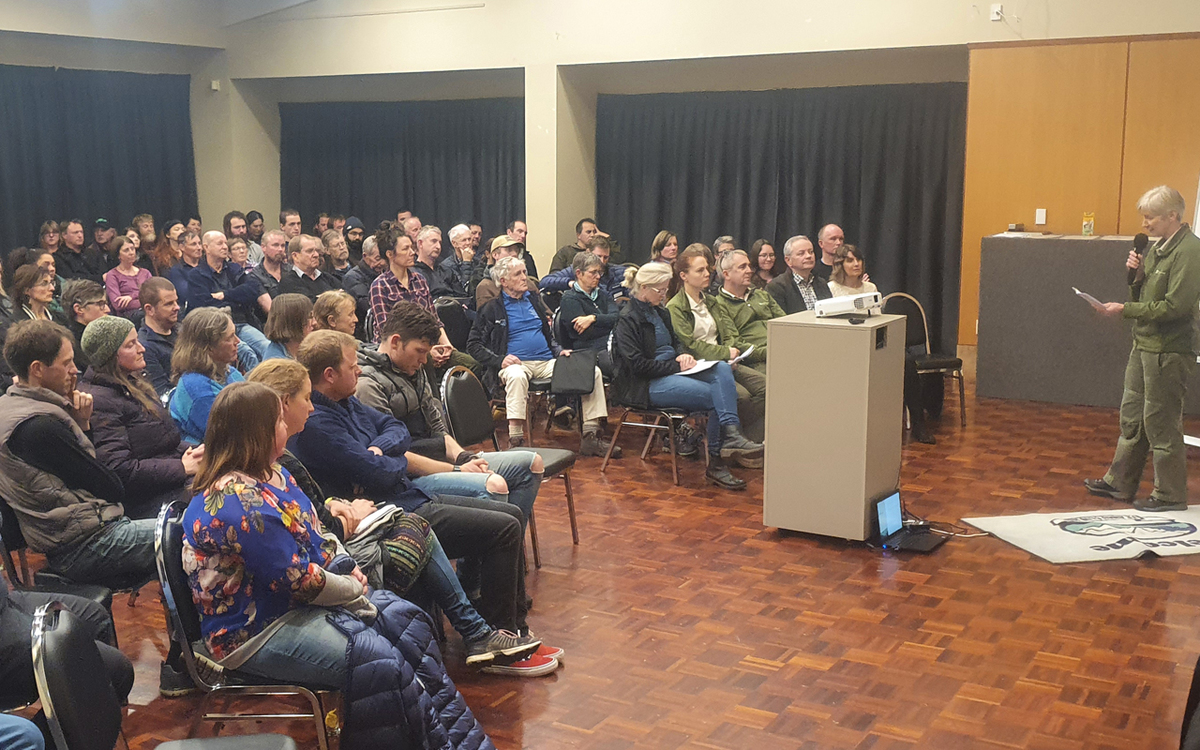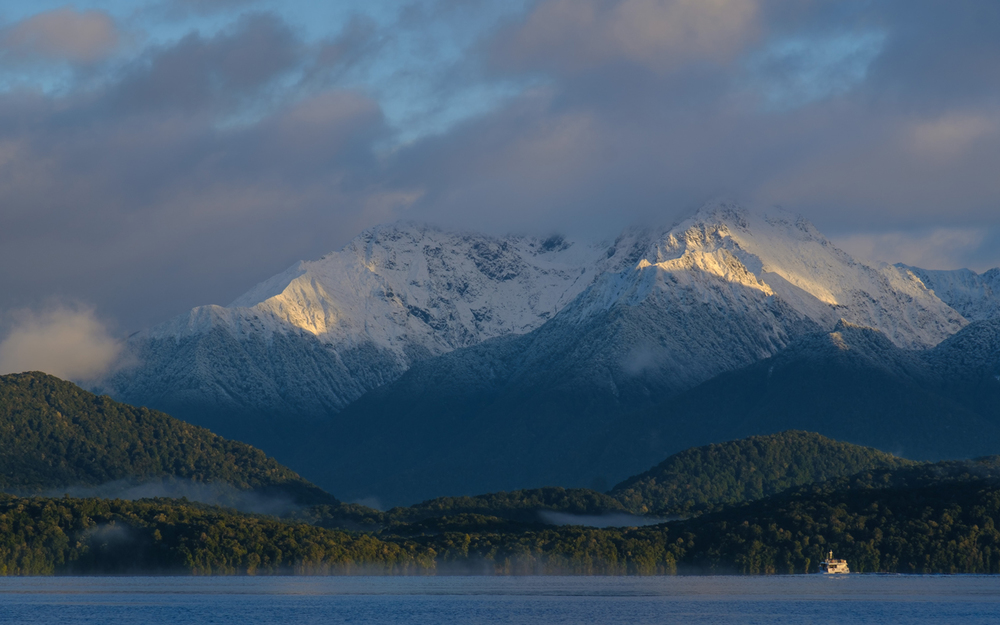“Fiordland needs help”: Fiordland Alliance chairwoman Nedra Burns
Marjorie Cook
31 July 2020, 5:26 AM
 Fiordland Alliance chairwoman Nedra Burns addresses a public meeting on Wednesday. PHOTO: Department of Conservation
Fiordland Alliance chairwoman Nedra Burns addresses a public meeting on Wednesday. PHOTO: Department of ConservationMore than 100 people attended the Fiordland Alliance meeting in Te Anau on Wednesday night to discuss how Fiordland businesses and organisations can attract the region’s fair share of the Department of Conservation’s $500 million Jobs for Nature fund.
Fiordland Alliance chairwoman Nedra Burns said the meeting went “really well”.
“It was certainly surprising in a good way. There was lots of positivity and energy in the room. Maintaining the momentum going forward will be a challenge for the Alliance team. The key message I took away from the meeting is Fiordland needs help,” she said.
The larger Jobs for Nature fund has set aside $200 million for Kaimahi For Nature projects, which allows the Department of Conservation to work with councils, iwi and local businesses to provide nature-based jobs on and off public land, through a regional alliance model.
Kaimahi for Nature funding will be targeted towards helping businesses maintain their workforce and do conservation work as they move towards economic recovery from the Covid-19 pandemic.
The remainder of the $500 million budget is dedicated to restoring nature on public and private land ($154.3 million, revegetation, pest and weed control, riparian planting) and protecting nature ($147.5 million, pest control and eradication).
The Jobs for Nature Fund hopes to create at least 6000 jobs over the next four years.
The Fiordland Alliance was formed recently to target the $200 million Kaimahi for Nature programme.
The members are Department of Conservation, Ngai Tahu – Oraka Aparima, Destination Fiordland, Environment Southland, Fiordland Community Board, Fiordland Marine Guardians, Great South, Southland District Council and Southland Conservation Board. Ms Burns is also the operations manager of DOC’s Fiordland office.
Ms Burns said Great South predictions were that Fiordland would suffer a $180 million decline in visitor spending by Christmas.
That could cause a loss of 1080 jobs (40% of the region’s 2700 jobs) in the next three months.
Ms Burns said the forecasts “painted a realistic picture’’ but acknowledged the losses would have a “devastating impact on a small community’’.
“We need help. People are prepared to do the work, they are happy to reinvent Fiordland as a more sustainable, world-class tourism destination . . . They are very motivated, but we do need funding from the Government to achieve that,” she said.
Many good job creation ideas were raised at the meeting, such as – but not limited to – weed control projects and working with Ngai Tahu on a cultural interpretation project for when tourism returned, Ms Burns said.
Fiordland Alliance would now review all the suggestions before coming back to the community in two weeks “with a selection of ideas that have legs”, she said.
There would be a collaborative approach to make sure robust proposals were ready as soon as more details were known about how the funding would be allocated around the country.
“We don’t know if there’s an allocation to regions yet. We are still waiting for advice on that. There is not a time frame on that. It is imminent,” she said.
Because the funding programme runs for four years, it was important to have some applications ready to go immediately, while others could be brought on stream later, Ms Burns said.

Lake Te Anau with the Murchison Mountains behind. PHOTO: Crystal Brindle, Department of Conservation
FIORDLAND TOURISM BACKGROUND
Fiordland is the most remote part of New Zealand and is virtually uninhabited, apart from the townships of Te Anau and Manapouri (combined population of about 2140, according to Census 2018).
Last year, Fiordland's crown jewel, Milford Sound, was a booming tourist destination and bursting at the seams with visitors.
The region topped 1 million domestic and international visitor numbers in the year ended June 2019, up from 457,000 visitor numbers in 2012.
The regional tourism organisation, Destination Fiordland, reported $156 million in spending just from overseas visitors, in the June 2019 financial year, with overseas visitors staying 533,078 guest nights.
Domestic visitors spent $81 million and stayed 194,258 guest nights in 2019.
Fiordland was closed by floods in February. Then the Covid-19 pandemic kicked in and the borders closed.
Destination Fiordland recently won $400,000 in Government funding to refocus its marketing campaign on the domestic market and work on a destination management project.
READ MORE:
Lots of ideas for future management of Milford Sound
Fiordland tourism gets Government boost
Fiordland faces 40 percent unemployment

